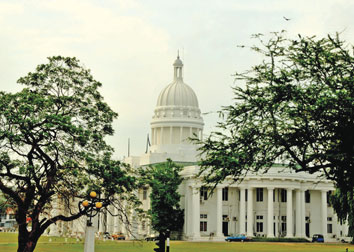 |
|
The Town Hall, Colombo |
From an open hood double decker...
Landmarks in Colombo
by Omar RAJARATHNAM
The crowds that enter and exit the city are but a daily routine of
the hustle and bustle of Colombo. Be it Fort, Town Hall, Grandpass or
Galle road, passers by are used to seeing many structures that have over
time become only backdrop of the city, but we never think of the
significance each of these structures hold or do we?
Having realised this oversight, writer Juliet Coombe along with her
co-author Lasantha David began trekking around the city to re-discover
landmarks in Colombo and their venture manifested in the first city
guide of Colombo city which sheds a significant light on signature
locations of the city.
The book was launched at a well-known restaurant
in Colombo 7 simultaneous with the website launch of the other partner,
following an open hood double-decker bus tour to some of the selected
landmarks which gave those present the unique experience of looking at
Colombo with a different light and of course at an unusual height.
The first landmark stop was opposite the Ceylon continental Hotel,
one of the first five star hotels in Colombo, overlooks the first
lighthouse which stands grandly at the end of Chatham Street in the form
of a clock tower. Many on the tour were shocked to learn that Colombo
ever had a light house, let alone something that has been protected over
many decades.
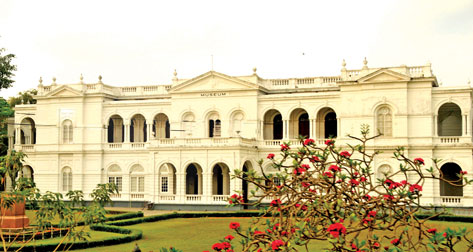 |
|
The Colombo Museum |
Sir Baron Jayathileka Mawatha which preserves colonial structures of
the British is considered as another landmark. Resembling the iconic
Harrods showroom in Knightsbridge, London, the street is home to many
financial institutions and the entrance to the President's House. A walk
along the street to the left, brings you to the main gate of the Colombo
Harbour which is ranked among the top 35 harbours in the world.
Discovered by the Portuguese in 1505, the harbour has not yet ceased
being the hub for ships that sail in the Indian Ocean.
The next stop was the Memon Mosque in Pettah, built with red bricks
with white borders that demarcate each of them with its domes reaching
out to the sky, the mosque is an architectural spectacle in busy and
dusty second cross street. A cart opposite the mosque sells fresh fruit
juices and the food shops around have flavoured Biriyani and the Bombay
sweet marts that will enthrall those with a sweet tooth.
The walk along
the road will bring you to Main Street, where the most popular cloth
shops are located and Sea Street where goldsmiths thrive.
We then headed to St. Lucia's Cathedral in Kotahena, Colombo, the
oldest and largest functioning Parish cathedral in Sri Lanka. The modest
origins of this 110 year old cathedral can be traced to a small chapel
of wood and cadjan erected by the Oratorian fathers in 1760 when Ceylon
was under Dutch rule which was replaced by a bigger church built of
brick and mortar in 1782.
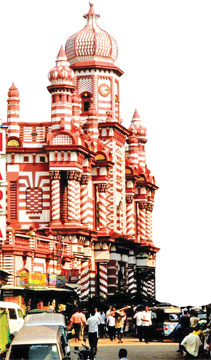 |
|
The Grand Mosque,
Pettah |
The foundation stone of the new cathedral was
laid to replace the old structure. The design of the building was
completed in 1873 thus sowing the seeds of grandeur and splendour in
Kotahena. The construction work was completed in 1887. The finishing
touches were given in 1902 and the cathedral continues to remain a
serene attraction of this congested town.
Having passed through Panchikawatte, the marketplace of motor spare
parts and Maradana, home to the biggest Muslim boys school in the
country _ Zahira College, we passed the next landmark in Colombo, the
Town Hall clock tower junction which is also popularly known as 'Lipton
Circus'.
The junction has the Cinnamon Garden Baptist Church, the Deveta
Gaha Muslim Mosque and the Colombo Municipal Council which resembles the
White House in Washington D.C.The Colombo Museum epitomises landmarks of
Colombo; opened on January 1, 1877. The Museum preserves many antiques
and is a clear representation of the unity and multi-culturalism of
Colombo as it is closed on Fridays to honour the Muslim architect's
Wapuchi Marikar's request that it be closed on Friday for the Friday
Jummah prayer.
The British Commissioner's were said to be so pleased with he
architectural design that they promised to grant any request he desired.
The comprehensive city guidebook is scheduled to be distributed in
over 40 countries and is sure to ease the travel mayhem of many tourists
due to the detailed explanations of Colombo's landmarks. Co-writer
Lasantha David said "Colombo is worth the journey; every street, every
person, every story" and you are sure to experience it in your daily
trek through Colombo. The British Commissioners' were said to be so
pleased with the architectural design that they promised to grant any
request he desired.
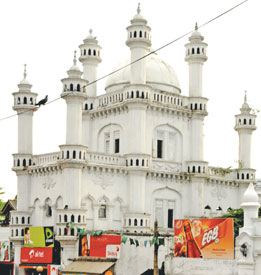 |
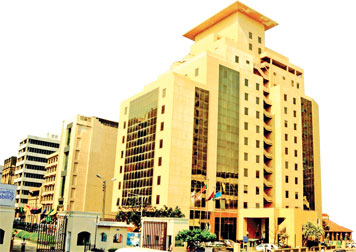 |
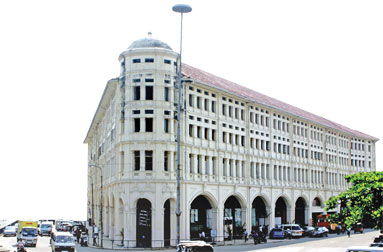 |
| The Dewatagaha
Mosque,Colombo |
Former Akasa Kade
building |
Grand Oriental Hotel |
|

